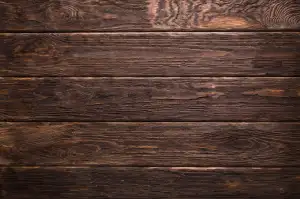Revive Your Cast Iron Skillet: The Ultimate Guide to Cleaning and Restoring

A cast iron skillet is a beloved kitchen tool that can last for generations if properly cared for. However, over time, these skillets can accumulate grease, food residue, and even rust. To keep your cast iron skillet in top shape and ensure it continues to provide you with delicious meals, regular cleaning is essential. In this guide, we will walk you through the step-by-step process of cleaning and restoring your cast iron skillet to its former glory. So let's roll up our sleeves and get started on reviving your cast iron skillet!
Gather the Necessary Supplies
To properly clean and restore your cast iron skillet, you will need to gather a few essential supplies. Firstly, you will need a stiff brush or sponge specifically designed for cast iron cleaning. This will help remove any food particles or residue without damaging the surface of the skillet.
Next, you will need some mild dish soap. Make sure to choose a gentle formula that is free from harsh chemicals or abrasives. This will be used in combination with the brush or sponge to clean the skillet thoroughly.
Additionally, you will need kosher salt or coarse sea salt. This coarse texture will act as an abrasive agent to help remove stubborn stains or rust spots from the skillet.
Lastly, you will need some vegetable oil or any other high-heat cooking oil. This oil will be used for seasoning the skillet after it has been cleaned and dried. It helps create a protective layer on the surface of the skillet, preventing it from rusting and enhancing its non-stick properties.
By gathering these necessary supplies, you'll be well-prepared to tackle the task of cleaning and restoring your cast iron skillet effectively.
Start with Gentle Scrubbing
To start cleaning your cast iron skillet, begin with gentle scrubbing. Avoid using harsh abrasive cleaners or metal scouring pads, as they can damage the surface of the skillet. Instead, opt for a soft sponge or brush and warm water. Gently scrub the skillet to remove any loose food particles or residue. If there are stubborn bits stuck to the surface, you can use a nylon scraper to gently scrape them off. Remember to be gentle to avoid scratching the skillet's seasoning. Once you have finished scrubbing, rinse the skillet thoroughly with warm water and move on to the next step in restoring your cast iron skillet.
Remove Stubborn Stains with Salt and Oil
To remove stubborn stains from your cast iron skillet, you can use a combination of salt and oil. Start by sprinkling a generous amount of coarse salt onto the surface of the skillet. Then, using a paper towel or a clean cloth, rub the salt into the stains in a circular motion. The abrasive texture of the salt will help to lift off any stuck-on food particles or residue.
Next, drizzle a small amount of oil onto the stained areas. You can use any type of cooking oil, such as vegetable oil or canola oil. Using a clean cloth or paper towel, gently rub the oil into the stains, applying slight pressure. The oil will work to break down the stains and help loosen them from the surface of the skillet.
Continue rubbing the salt and oil mixture onto the stubborn stains until they start to fade away. Be patient and persistent with this process, as it may take some time to completely remove tough stains.
Once you are satisfied with the results, rinse off the skillet under warm running water. Use your hands or a soft sponge to scrub away any remaining salt and oil residue. Make sure to thoroughly dry the skillet using a clean towel or by placing it on low heat on your stovetop.
By using this method, you can effectively remove stubborn stains from your cast iron skillet and restore its natural beauty. Remember to always be gentle when cleaning your cast iron skillet to avoid damaging its seasoned surface.
Rinse and Dry Thoroughly
Once you have finished scrubbing your cast iron skillet, it is important to rinse it thoroughly to remove any remaining soap or cleaning solution. Soap residue can affect the seasoning of the skillet and leave a soapy taste in your food.
To rinse the skillet, simply hold it under warm running water and use your hands or a soft sponge to remove any traces of soap. Make sure to get into all the nooks and crannies to ensure a thorough rinse.
After rinsing, it is crucial to dry the skillet completely. Leaving any moisture on the surface can lead to rusting. Use a clean towel or paper towels to pat dry the skillet, making sure to absorb all the water.
To ensure that every bit of moisture is removed, you can also place the skillet on a stovetop burner set on low heat for a few minutes. This will help evaporate any remaining water.
Remember, drying your cast iron skillet thoroughly is essential for its longevity and preventing rust. So take your time and make sure it's completely dry before moving on to the next step in restoring your beloved cooking companion.
Season the Skillet for Protection
Seasoning your cast iron skillet is an essential step to protect it from rust and maintain its non-stick surface. To season the skillet, start by preheating your oven to 350°F (175°C). Next, apply a thin layer of vegetable oil or melted shortening all over the skillet, including the handle. Make sure to coat both the inside and outside surfaces.
Place the skillet upside down on the middle rack of your oven and bake it for one hour. This process allows the oil to polymerize, creating a natural non-stick coating. Place a baking sheet on the lower rack to catch any drips.
After an hour, turn off the oven and let the skillet cool completely inside. Once cooled, use a paper towel to wipe off any excess oil. Your cast iron skillet is now seasoned and ready for use.
Remember that seasoning is not a one-time process; it needs to be repeated periodically to maintain its effectiveness. Regularly cooking with oils or fats will help build up this protective layer over time.
Avoid using soap or harsh detergents when cleaning your seasoned skillet as they can strip away the seasoning. Instead, use hot water and a brush or sponge to gently clean it after each use. Dry thoroughly before storing to prevent moisture from causing rust.
By properly seasoning your cast iron skillet, you'll ensure its longevity and enjoy cooking with a naturally non-stick surface that enhances flavors and creates delicious meals every time.
Proper Storage and Maintenance Tips
To ensure your cast iron skillet stays in top condition, it's important to follow these storage and maintenance tips:
1. Store it in a dry place: After cleaning and drying your skillet, make sure to store it in a dry location. Moisture can lead to rusting, so avoid storing it in a damp environment like under the sink or near a dishwasher.
2. Avoid stacking: To prevent scratches or damage to the seasoning, avoid stacking other cookware on top of your cast iron skillet. Instead, place a towel or paper towel between skillets if you need to stack them.
3. Re-season periodically: Over time, the seasoning on your skillet may wear off. To maintain its non-stick surface and prevent rusting, re-season it every few months or as needed. Simply apply a thin layer of oil and bake it in the oven at a low temperature for an hour.
4. Use gentle utensils: When cooking with your cast iron skillet, opt for wooden or silicone utensils instead of metal ones that can scratch the surface.
By following these storage and maintenance tips, you'll keep your cast iron skillet in excellent condition for years to come, ensuring delicious meals every time you use it.
Now that you have learned how to clean and restore your cast iron skillet, you can enjoy the benefits of cooking with this versatile and durable kitchen tool. A properly cleaned and seasoned skillet will provide excellent heat distribution, non-stick properties, and enhance the flavors of your dishes.
Remember to always use gentle scrubbing techniques and avoid harsh chemicals that can damage the seasoning. Regularly season your skillet to maintain its protective layer and prevent rusting. Proper storage in a dry place is essential to keep your skillet in top condition.
With a clean cast iron skillet, you can confidently cook a wide range of recipes from searing steaks to baking cornbread. So go ahead, explore new culinary adventures, and savor the delicious results that only a well-maintained cast iron skillet can deliver. Happy cooking!
Published: 12. 12. 2023
Category: Home



